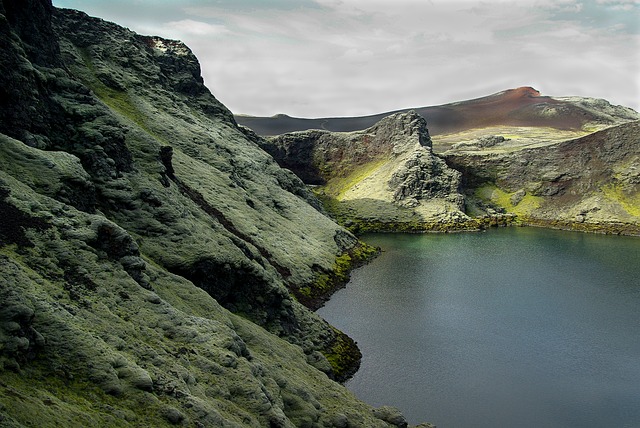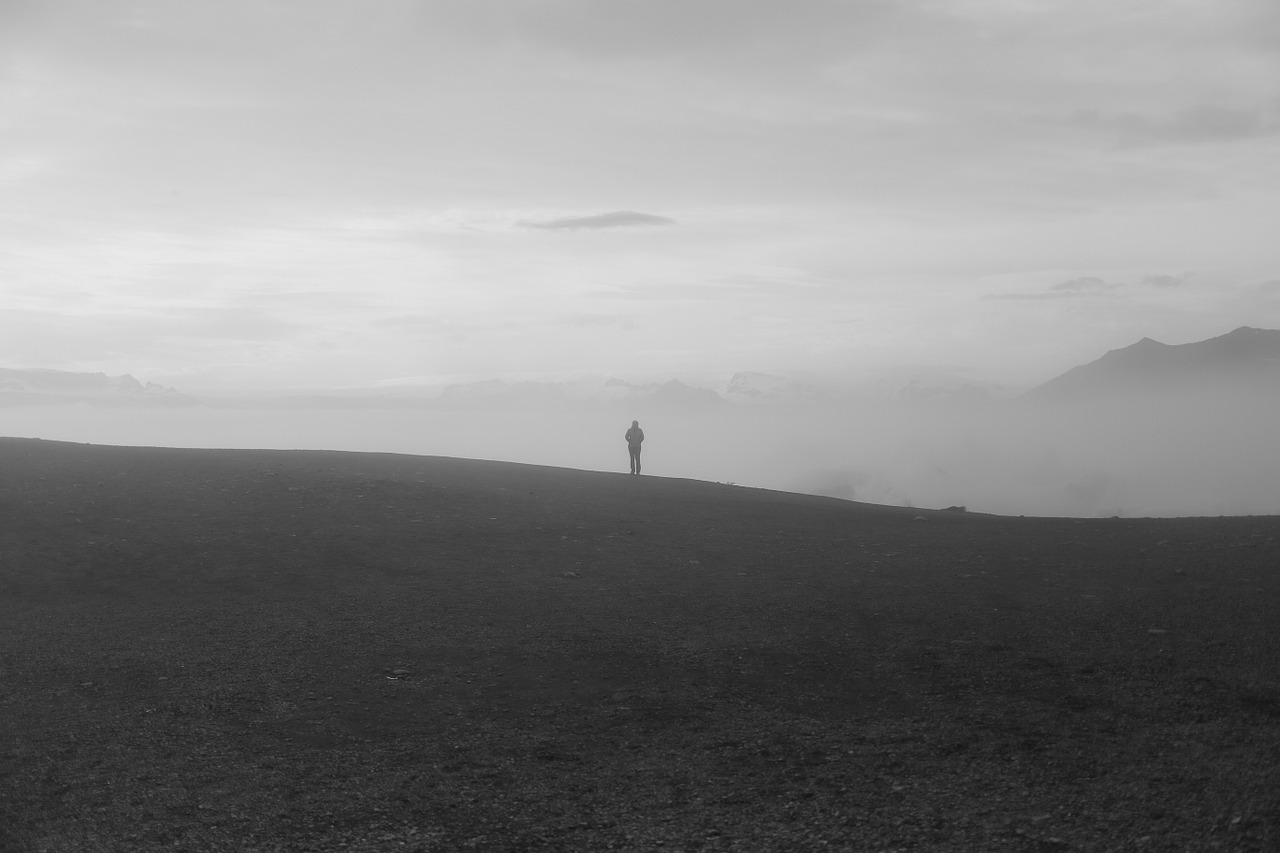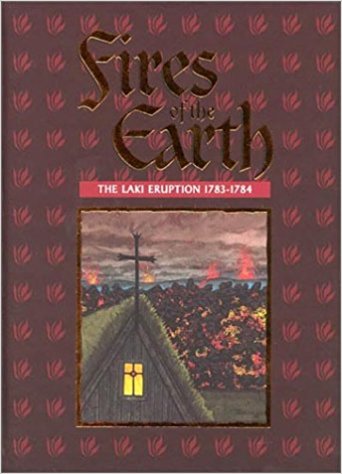

Iceland is home to 130 volcanoes and as of today, 30 of them are active. While the country has experienced 13 eruptions since it was settled in AD 874, none has been as devastating as the Laki eruption that started in 1783 and lasted for 8 months! During this episode of the All Things Iceland podcast, you will learn about the effects this massive eruption had on Iceland and other parts of the world.
Where the Laki Volcano is Located
If we are being technical, the mountain Laki did not erupt. Instead, fissures opened up on each side of it after groundwater interacted with rising basalt magma. The fissure is called Lakagígar, part of the volcanic system that centers on Grímsvötn volcano. For the sake of simplicity, I will say Laki instead of Lakagígar and eruption when referring to the fissure releasing gas and lava.
For starters, I think it would be helpful to give you an idea of where the eruption took place. This volcanic fissure lies along the south of Iceland near to the magnificent Eldgjá. This word directly translates to the Canyon of Fire. Kirkjubæjarklaustur, a small village that most people have probably fumbled over trying to pronounce, is very close to Eldgjá.

Laki’s Devastating Effect on Iceland
From June 8th, 1783 until February 7th, 1784, the Laki fissure and Grímsvötn volcano poured out toxins. An estimated 42 billion tons of basalt lava, as well as poisonous hydrofluoric acid and sulfur dioxide were released into the soil and air. The lava flow destroyed 20 villages. The soil contamination led to the death of over 80% of sheep, 50% of cattle and 50% of horses in Iceland. The 8 million tons of hydrogen fluoride that was released caused dental and skeletal fluorosis in the animals. Most of the crops were wiped out as well. The loss of crops and livestock resulted in a famine that killed about 25% of the Icelandic population.
The quote below is an excerpt from the book, Fires of the Earth: the Laki eruption, 1783–1784. It gives a very vivid depiction of what happened to the livestock and villages during this eruption.
“This past week, and the two prior to it, more poison fell from the sky than words can describe: ash, volcanic hairs, rain full of sulfur and saltpeter, all of it mixed with sand. The snouts, nostrils, and feet of livestock grazing or walking on the grass turned bright yellow and raw. All water went tepid and light blue in color and gravel slides turned gray. All the earth’s plants burned, withered and turned gray, one after another, as the fire increased and neared the settlements.[13]”
Surprising Effects in Asia & Africa
The effects in Iceland were no doubt devastating, but it was not the only place the suffered. Scientists have found evidence that the eruption weakened Indian and African monsoon circulations. This resulted in between one to three millimeters less daily precipitation than normal in the north east and north west regions in Africa. Less rain meant a low flow in the Nile river. Egypt ended up experiencing a famine in 1784 that killed 1/6th of its population.
The Effect of the Laki Eruption in Europe & North America
The outpouring of millions of tons of hydrogen fluoride and sulfur dioxide became known as the Laki haze across Europe. The thick haze from the 120 million tons of sulfur dioxide that was emitted resulted in thousands of deaths. Inhaling this poisonous gas causes you to choke as your soft tissue starts to swell.

The summer of 1783 was very hot and the winter brought extreme frost in Great Britain. They estimated losing 23,000 British people due to the poison. During the spring of 1784, Germany and Central Europe reported severe flood damage after regions thawed following the blistering cold winter. Even many years after the eruption, Europe was feeling the effects. The Laki eruption has been linked to the French Revolution in 1789. It is believed that the poisonous gas caused droughts, bad winters and bad summers during the years following its eruption.
Gilbert White, an English naturalist and ornithologist, said the following about summer of 1783 in Selborne, Hampshire, England:
The summer of the year 1783 was an amazing and portentous one, and full of horrible phaenomena; for besides the alarming meteors and tremendous thunder-storms that affrighted and distressed the different counties of this kingdom, the peculiar haze, or smokey fog, that prevailed for many weeks in this island, and in every part of Europe, and even beyond its limits, was a most extraordinary appearance, unlike anything known within the memory of man.
By my journal I find that I had noticed this strange occurrence from June 23 to July 20 inclusive, during which period the wind varied to every quarter without making any alteration in the air. The sun, at noon, looked as blank as a clouded moon, and shed a rust-coloured ferruginous light on the ground, and floors of rooms; but was particularly lurid and blood-coloured at rising and setting.
All the time the heat was so intense that butchers’ meat could hardly be eaten on the day after it was killed; and the flies swarmed so in the lanes and hedges that they rendered the horses half frantic, and riding irksome. The country people began to look, with a superstitious awe, at the red, louring aspect of the sun; […][25]
North America did not escape the effects of this eruption either. The winter of 1784 was recorded as being one of the longest and coldest across the United States. Surprisingly, the Mississippi River froze near New Orleans and there were reports of drift ice in the Gulf of Mexico.
Incredibly, the aftermath of this eruption caused a drop in global temperatures. Iceland might be a small island in the North Atlantic but natural events like this one show that it can have a huge impact on the rest of the world.
Icelandic Word of the Episode
The Icelandic word of this episode is eldfjall. Listen to the podcast at 8:33 to hear how it is pronounced and what it means. I also shared a random fact about volcanoes in Iceland during this episode at 7:45. Check it out.
Let’s be social!
Here is where you can connect with me on social media platforms:
If you have enjoyed this episode of All Things Iceland, please subscribe to the podcast, so you don’t miss an update. If you are listening to this on iTunes or any other platform that allows reviews, please leave a review, if you haven’t already.
Þakka þér kærlega fyrir að hlusta (og að lesa) og sjáumst fljótlega.
(Thank you kindly for listening (and reading) and see you soon!)
